Alphabet for the Architecture of the Networks
When reading some commonly acknowledged historical publications on architecture and architectural theory it may be somewhat confusing for non-expert to read an alphabet like this. For example in “The Four Books of Architecture” by Andrea Palladio there are clear instructions on how to choose proper site, advices on different building constructions and materials, explanations of building typologies, description of architectural elements such as: columns, architraves, stairs, etc. Only recently, let say in last forty years or so, architects write about “source code” of architecture in a different manner. Except of some traditionalists who still think that architecture is about pure building production, there is no real need for innovative way of piling the bricks on top of each other or writing about further formal tortures which could be done to walls, floors and facades. We do not need to reinvent something already happened. Yes, we still need to think more about novel insulation systems, to make our buildings airtight, to reduce cold bridges, save resources and use regenerative materials, improve and optimize construction procedures, implement environment friendly energy sources and stamp everything green. However, although necessary tasks from service-oriented daily practice, it is still not something which architects as need to be predominantly preoccupied with. Let us be aware of it and well informed about the current development (it is a basic responsibility of the profession), but basically understand that is no need for anything else physical – we have already produced more then enough stuff. Therefore let us outsource this to the building industry, which can response in proper manner based on conceptual and environmental demands made by architects.
In that sense the following alphabet is an attempt to start discussion about new definition of architectural source code (alphabet is a code needed to decode and to understand particular writing), however not of architecture in general (which would be impossible) but the very specific architecture of the networks. The architecture of the networks, as an interconnected approach, initiates the discussion about the possibilities of finding out the answers beyond the architectural dogmas, rigid academic institutions and “schools”, but rather an inspired investigation into other fields and phenomena of the present time, seeing the classical architectural craftsmanship just as one node in a bigger system.
Since architecture has an ethical problem with everything which is not static or not haptic, in its traditional role providing shelter and for that reason feeling obliged towards a culture of stasis, it represents a challenge to dispense with idealized ideological notions. The starting point would initially be a simple understanding of the surroundings which influence our ways of living. If architecture as a discipline wants to make step forward and be compatible with progress of the civilization development of the twenty-first century, as well to be understood as option to the design the future world we would like to have and not the one we are forced to consume, then the new design strategies and theories has to be introduced. With other words we need to change the source code of architecture – it’s alphabet.
A – Advanced Architecture
Advanced architecture is an architecture positively bound to change: by events and actions, with temporally and evolutionary dimension of the processes. It is abstract all inclusive discipline and it incorporates augmented realities based on “both … and” principle.
B – Biodiversity
The entire planet is one interconnected ecosystem, where biodiversity implies degree of variations of life forms or species within. We can understand biological diversity and implement it to the design, when we rediscover a conjoint of new and changing possibilities. However, this is not matter of choice it is about survival of our civilization.
C – Collaborative Design Network
Collaborative design network persuades methods of improving the speed and quality of the design process based on parallel processing of the knowledge of all disciplines involved from the very first stages of the design, according to a network structure.
D – Distributed Intelligence
The growing reliance of system connections on functional, rather than physical, proximity of their elements will dramatically transform the notions of personhood and identity and create a new community of distributed info morphs – advanced informational entities. It considers multi-agent systems, where the agents are not software but dislocated interconnected humans.
E – Extended Body
Emerging electronic space is a medium of action rather than information, thus giving us the opportunity of developing full physical engagement with the global environment. Deep ecology due to technology.
F – File-to-Factory (F2F)
These procedures facilitate the transfer of complex digital design information to computer driven material production and manufacturing, setting new standards that overcome the repetitive modalities of modernism.
G – Generative Design Tools
The tools which involve the use of time-based and code-based software to avoid intentionality and produce unexpected, arbitrary and inexhaustible diversity. The generative process is controlled by the software, not by the designer.
H – Heterarchitecture
A new kind of architecture, conceived as a quantum object in which real space and virtual space are coherently superposed, thus obeying the rules of quantum mechanics rather than classical physics.
I – Immersive Virtual Environment
Immersive virtual environment allows the user in a networked collaborative environment to work with the data set as though it occupied real space. The user has immediate and direct control of the process of segmentation and visualization.
J – Just do it
Come on, do it. No matter how difficult and challenging the problem may be, still: do it again. To fail is not a problem.
K – Knowledge retrieval
Knowing nature of things in order to act upon the reality. In Petabyte Age the knowledge retrieval will help us to seek and discover complex information sets from huge amount of data and present it in a structural form easy to understand.
L – Liquid Logic
The logic which runs at least two opposites at once, e.g. 1 and 0, thus enabling an open environment where both human creativity and super cool subatomic bits flourish. Liquid logic is a foundation for quantum information theory, since it considers paradox about information storage and transfer as most valuable asset.
M – Multimodal interfaces
Interfaces orchestrated by cognitive science for new emerging interoperable systems which are combining multiple synchronized users’ interaction modes. Multimodal output includes synergy in the form of visual, auditory, touch and olfaction cues, as well invisible interface spaces by using sensor technology. Immediate and transparent content response supports the principle ‘form follows feedback’.
N – Network Strategy
Network strategy is a practice based on evolutionary mode of prototyping an architectural product formed by higher orders of information, provided both locally and globally by virtual enterprise.
O – Ontology-based integration
Formal model of knowledge representation which are effectively combining information from multiple heterogeneous data sources. Structural frameworks for organizing information to explain the existence of types, properties and relationships within Architecture of the Networks. The focus is on the question: “how everything is related to everything else.”
P – Performative Design
Performative design is based on performance of spatial systems. In performative design a formal system may be considered as a digital prototype that is adaptive to output of digital performance-based simulation.
Q – Quantum Schizo
A state of the mankind development in which the medium is the architecture and myself means many selves – at least two: 1 and 0.
R – Responsive Architecture
The new kind of building is based on real-time behavior of programmable pro-active structures, adapting to the needs of dwellers.
S – System thinking
In complex organizational structures such as our living ecosystem, we need to understand how things influence one another within the whole. Advance technology can help to view open systems in holistic manner without simplifications.
T – Trans-disciplinary collaboration
Trans-disciplinary approach is a mode of collaboration which results in findings that alter the discipline itself and enhance the innovations to emerge in unpredictable way. This integrative form of design refers to heterogeneous visions and expectations of multiple agents.
U – Ubiquitous Computing
New types of computers invisibly embedded into our everyday environment. Rather than explicitly being the user of a computer a human will implicitly profit from services running between computers without even taking notice of them. Ubiquitous computing enables user-driven innovation.
V – Virtualization
It augments the common working setting by virtual immersive environment. This location independent work approach provides the basis for a collaborative real-time planning and presentation among several actors dispersed on sites across the country or around the globe.
W – World Wide Grid
WWG is a hardware and software infrastructure that makes resources like computing power, data, software products, etc. accessible on demand at any place in the world. From the World Wide Web into the World Wide Grid.
X – X=X
It is a formula how to approach a world characterized by ambiguity, contradiction, infinite complexity/unknownability which is simultaneously smaller, faster, flatter.
Y – Yes
Yes is a prefix of uncertain meaning, sometimes of perfective or intensifying force.
Z – Zoom
Zoom is a scaleless strategy for visualizing, theorizing the invisible. Nothing haptic.
Editorial note:
The definitions have been developed in collaboration with philosopher Georg Flachbart. However, the process has been inspired by the book: Mauel Gausa et al., ed., The Metapolis Dictionary of Advanced Architecture (Barcelona: Actar, 2003)

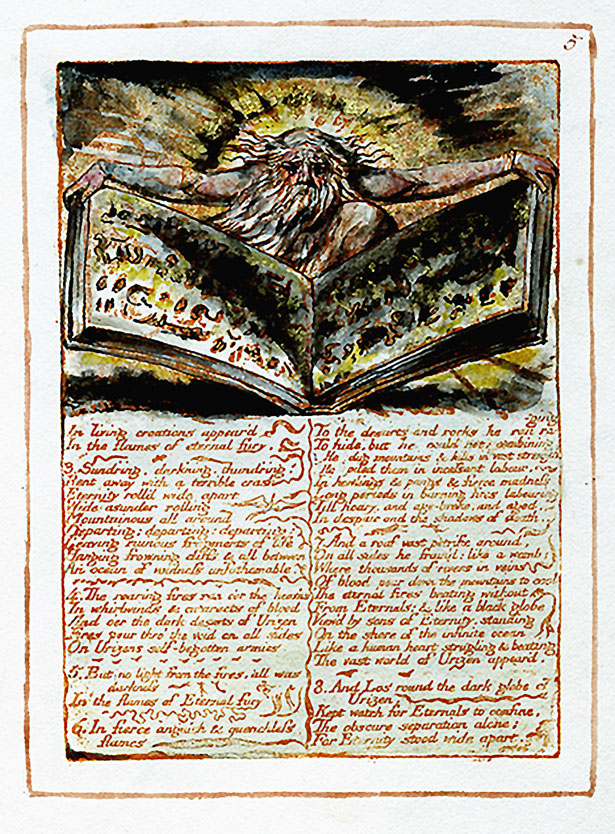


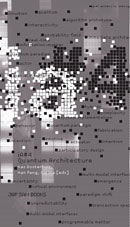
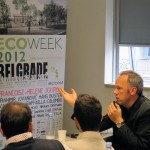
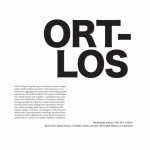
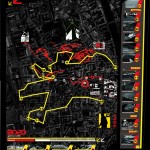






You must be logged in to post a comment.